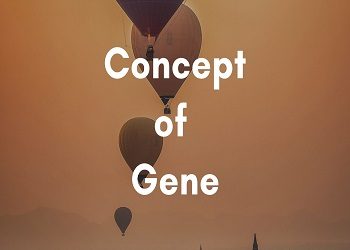Concept of Gene:
The basic unit of inheritance is commonly known as a gene. Though the concept of gene was proposed by Sutton in 1902, the term gene was first used by Johannsen in 1909. Earlier it was referred to as Mendelian factor or determinor. The concept of gene was later on developed by other scholars like Morgan, Bridges, Muller. The word gene has been derived from the Greek word gennom, which means to produce.
Genes are located in the chromosomes, where these are arranged in a single linear order. Genes are ordinarily transmitted from one generation to the next one. Genes determine the biological characteristics in a living system. Each gene has a specific position in a specific chromosome. This position is called locus. However, the positions may be changed because of various reasons. Genes are capable of duplicating themselves. Duplication takes place very accurately. This phenomenon is called replication. Mutation, a spontaneous change in the composition of a gene, may produce a mutant gene. The expression of the mutant gene will be different from that of the original gene. The Gene of one chromosome may move to another chromosome by crossing over or by translocation. An allele is an alternative form of a gene. It has already been stated that one form of a gene has a specific locus. Alternative gene forms may occupy that specific locus. These forms are said to be alleles. When three or more gene forms are associated with a specific locus, the phenomenon is called multiple allelism.
From the second half of the present century, remarkable changes have occurred in the concept of gene. Many discoveries have been made in the field of molecular biology. Now gene is not regarded as a single entity as the basic unit of inheritance but is defined as a segment of DNA molecule. It is the carrier of coded information connected with a specific function. There are three kinds of genetic units in the segment. These are cistron, recon and muton. The cistron is the functional unit. The recon is the smallest unit of DNA that recombined during crossing over. The muton is the smallest unit of genetic material that mutates. Thus, genes can be recognized for function, recombination and mutation.









Comments (No)